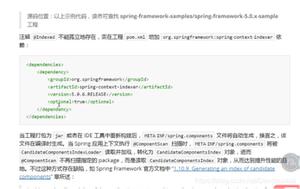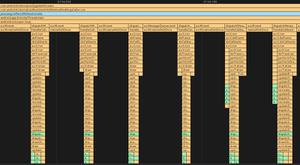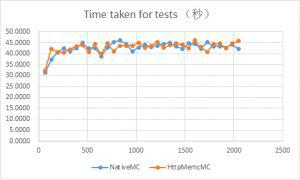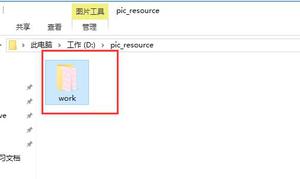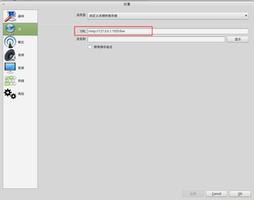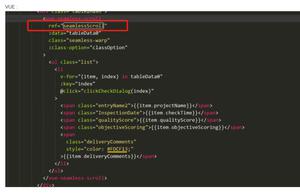.NET Core 2.0迁移小技巧之MemoryCache问题修复解决的方法
前言
大家应该都知道,对于传统的.NET Framework项目而言,System.Runtime.Caching命名空间是常用的工具了,其中MemoryCache类则常被用于实现内存缓存。
.NET Core 2.0暂时还不支持System.Runtime.Caching dll,这也就意味着MemoryCache相关代码不再起作用了。
但是好消息是,我们可以使用.NET Core 2.0的新API实现内存缓存功能,简单修改代码,解决不兼容问题。下面话不多说了,来一起看看详细的介绍吧。
解决方案
1.将旧代码导入项目中,如下:
using System;
using System.Runtime.Caching;
namespace TestWebApp.Service
{
public class MemoryCacheService
{
static ObjectCache cache = MemoryCache.Default;
/// <summary>
/// 获取缓存值
/// </summary>
/// <param name="key"></param>
/// <returns></returns>
private object GetCacheValue(string key)
{
if (key != null && cache.Contains(key))
{
return cache[key];
}
return default(object);
}
/// <summary>
/// 添加缓存内容
/// </summary>
/// <param name="key"></param>
/// <param name="value"></param>
public static void SetChacheValue(string key, object value)
{
if (key != null)
{
CacheItemPolicy policy = new CacheItemPolicy
{
SlidingExpiration = TimeSpan.FromHours(1)
};
cache.Set(key, value, policy);
}
}
}
}
导入后你会发现VS会提示无法找到System.Runtime.Caching命名空间,原有的代码无法直接编译使用。
2.添加对Microsoft.Extensions.Caching.Memory命名空间的引用,它提供了.NET Core默认实现的MemoryCache类,以及全新的内存缓存API
using Microsoft.Extensions.Caching.Memory;
3.改写代码,使用新的API实现内存缓存功能
初始化缓存对象方式改写前:
static ObjectCache cache = MemoryCache.Default;
初始化缓存对象方式改写后:
static MemoryCache cache = new MemoryCache(new MemoryCacheOptions());
读取内存缓存值方式变化:
private object GetCacheValue(string key)
{
if (key != null && cache.Contains(key))
{
return cache[key];
}
return default(object);
}
改写后:
private object GetCacheValue(string key)
{
object val = null;
if (key != null && cache.TryGetValue(key, out val))
{
return val;
}
else
{
return default(object);
}
}
设定内存缓存内容方式变化:
public static void SetChacheValue(string key, object value)
{
if (key != null)
{
CacheItemPolicy policy = new CacheItemPolicy
{
SlidingExpiration = TimeSpan.FromHours(1)
};
cache.Set(key, value, policy);
}
}
修改后:
public static void SetChacheValue(string key, object value)
{
if (key != null)
{
cache.Set(key, value, new MemoryCacheEntryOptions
{
SlidingExpiration = TimeSpan.FromHours(1)
});
}
}
结论
在使用了Microsoft.Extensions.Caching.Memory下的新API改写了旧代码后,你会发现原有的各种内存缓存超时策略全都是有对应新API的,包括AbsoluteExpiration, SlidingExpiration等等。
所以我们还是可以很轻松的使用.NET Core新API简单改动下下就能重用现有绝大部分旧代码,将其迁移过来继续起作用。
迁移后的完整代码如下:
using Microsoft.Extensions.Caching.Memory;
using System;
namespace TestMemoryCacheWebApp.Services
{
public class MemoryCacheService
{
static MemoryCache cache = new MemoryCache(new MemoryCacheOptions());
/// <summary>
/// 获取缓存值
/// </summary>
/// <param name="key"></param>
/// <returns></returns>
private object GetCacheValue(string key)
{
object val = null;
if (key != null && cache.TryGetValue(key, out val))
{
return val;
}
else
{
return default(object);
}
}
/// <summary>
/// 添加缓存内容
/// </summary>
/// <param name="key"></param>
/// <param name="value"></param>
public static void SetChacheValue(string key, object value)
{
if (key != null)
{
cache.Set(key, value, new MemoryCacheEntryOptions
{
SlidingExpiration = TimeSpan.FromHours(1)
});
}
}
}
}
总结
以上是 .NET Core 2.0迁移小技巧之MemoryCache问题修复解决的方法 的全部内容, 来源链接: utcz.com/z/357317.html

